Routine Car Maintenance Schedule
This general car maintenance schedule was created to give you an idea what the typical maintenance items are and how often they need to be replaced – by mileage or time. This is an “average” maintenance schedule so it doesn’t apply to any car in particular.
For exact instructions regarding your car, you should consult your car owner’s manual. Please don’t exceed the intervals specified there.
You may not find service intervals for things like “fill for life” fluids in your car owner’s manual. “Lifetime” or “Sealed for life” is the assumption that the original fluid will last the lifespan of the vehicle, and the manufacturer doesn’t specify a service interval.
The decision whether to replace such fluids depends on you, more precisely, how long you want your car to last. I will explain more below.
Engine oil change
The oil change interval can vary, depending on the manufacturer’s recommendations and the type of engine oil used. Usually, it’s between 5,000 and 20,000 miles.
These are the typical oil change intervals, based on the type of engine oil:
-
long-life synthetic oil – up to 20,000 miles, every 24 months, not recommended
-
synthetic oil – between 10,000 and 15,000 miles, yearly
-
semi-synthetic oil – 10,000 miles, yearly
-
mineral oil – 5,000 miles, every 6 months
In the old days, synthetic oil was not available. Therefore, it was common to change the engine oil every 3,000 or 5,000 miles. This isn’t necessary anymore because synthetic oil has much better chemical and high-temperature stability. It is also better at removing deposits and doesn’t gel as quickly as mineral oil.
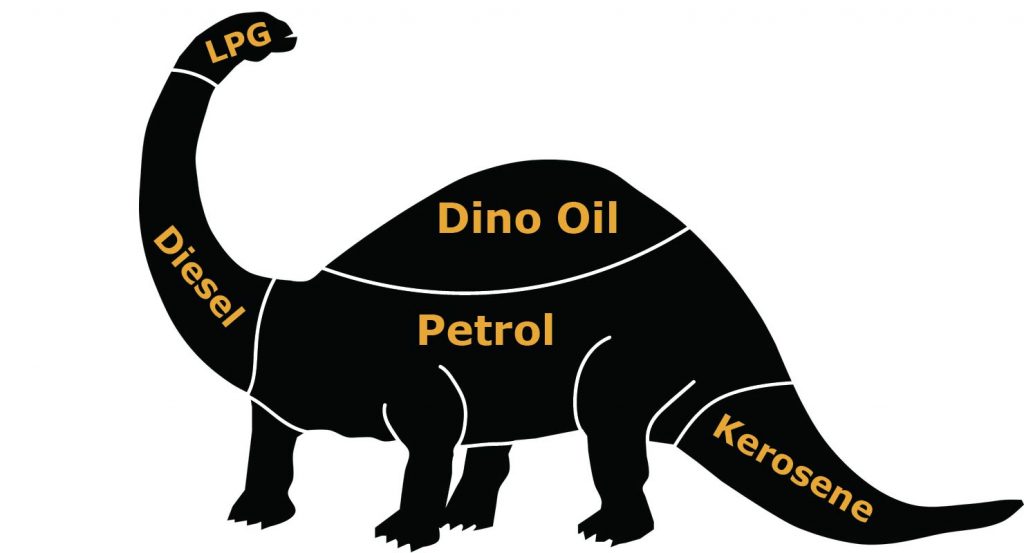
P.S. Dino oil is just a name that stuck. Dino oil comes from fossils, but not dinosaur fossils.
The trend is towards increasing the intervals between oil changes. I think there are good reasons behind it (improved oil formulas and extensive testing, for example), but I believe it is also driven by marketing.
Extended oil change intervals reduce the maintenance costs on paper, which is attractive to new car buyers. Also, it’s great for fleet owners because it reduces costs and the number of service visits. It’s better for the environment too (but probably not for your engine).
I don’t think the manufacturers care if the engines or turbochargers last for 200,000 miles. They only need to last long enough to keep the first and maybe the second owner of the car happy. I simply don’t have faith in some of the manufacturer’s claims because it’s not in their interest for the cars to stay on the road too long.
I think that extended oil change intervals are fine for some cars. However, they are not a good idea in cars which:
-
have a timing chain, which is lubricated by engine oil
-
have a turbocharger, which generates a lot of heat
-
mainly do short trips in the city
Conclusions
The 10,000 miles interval is a good universal guideline if you use a decent quality synthetic oil. Most modern engines should be able to go for 10k miles between oil changes without any problems. In my opinion, the engine oil should be changed yearly, regardless of the mileage, because oil degradation is a function of mileage and time.
Some cars that are hard on engine oil may need more frequent oil changes. Please do not go without changing oil longer than specified in your service manual. If it says every 5,000 miles, there’s probably a reason.
The 20,000 miles long-life interval should be fine for naturally aspirated engines that have a timing belt. This is an interval for motorway driving and not for cars with fancy auxiliary equipment that relies on engine oil, for example, variable valve lift systems etc.
Also, keep in mind that sticking to a long-life oil change interval requires a long-life oil filter and specific engine oil.
There’s one more thing – switching from dinosaur oil to synthetic oil in old, high-mileage cars may not be advised because the engine may develop leaks when filled with thinner synthetic oil, which is better at removing deposits. Also, worn-out engines may burn more oil after a switch to a thin synthetic oil.
Basically, switching from mineral 15W-40 oil to synthetic 5W-40 oil in old cars isn’t necessarily a good idea, despite the fact that synthetic oil is superior in pretty much every aspect.
Engine air filter replacement
The air filter should be changed every 20,000 – 30,000 miles. A good rule of thumb is to replace it with every second or third oil change. The interval for your car will be specified in the manual. If you live in dusty or polluted areas, you may need to replace the filter more often than typically.
The replacement interval specified by the manufacturer depends on the size of the filter – a larger filter, with more surface area, will last longer. The design of the intake duct and the airbox is also important.
In modern cars, the airflow through the filter element is usually against gravity and the airbox is designed in a way that dust, stones and other garbage entering the filter chamber don’t actually hit the filter element. Heavy particles, like stones, just settle down in the airbox.
The air filter is usually the single easiest maintenance item to replace. If you’d like to learn how to work on your car, this is a good DIY opportunity. In some cars, you may be able to do it in 60 seconds without any tools, in others it may take 10 minutes and you may need to use a regular screwdriver or a Torx screwdriver.
What are your experiences with changing the air filter? Let me know in the comments below. Let’s find the world’s worst air filter placement – one that makes changing the filter more than a 10-minute job.
Brake fluid (DOT3, DOT4, DOT5.1)
You should replace the brake fluid every two years, regardless of mileage. Brake fluid is hygroscopic, which means it absorbs moisture from the environment and becomes less resistant to high temperatures over time.
If the temperature of the brake fluid rises to the boiling point, gas bubbles will appear in the system and the brake pedal will go to the floor with little resistance and equally little braking force when you try to use the brakes. Replacing the brake fluid is especially important if you drive on mountain roads or you simply like to drive hard.
Another reason to change brake fluid regularly is that it may corrode the brake system if it’s contaminated with water and the corrosion inhibitors have degraded over time.
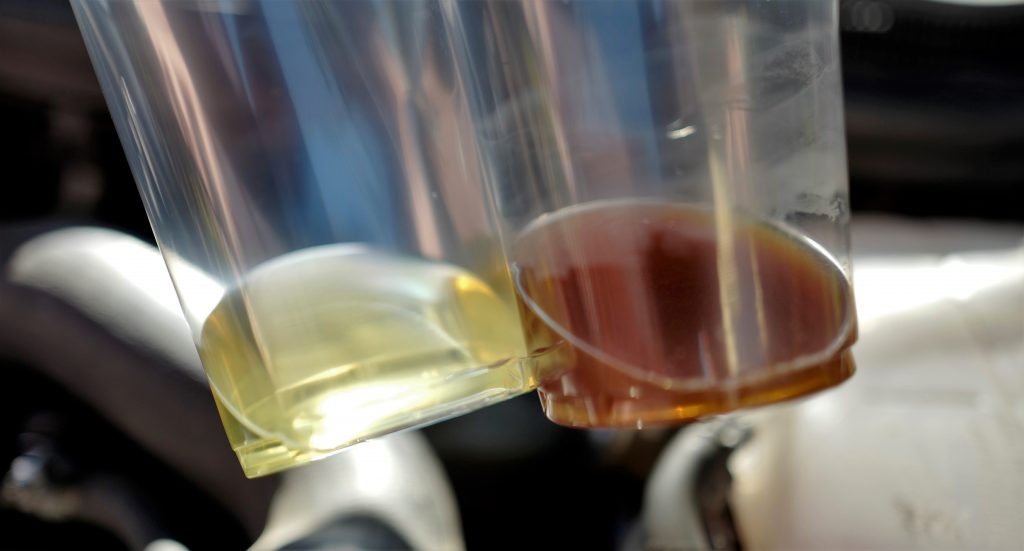
RIGHT: four-year-old brake fluid (overdue)
The most common brake fluid used in modern cars is DOT4. DOT4 can be mixed with the older DOT3 and the newer DOT5.1 as they are all glycol based. The DOT rating is related to the boiling temperature and the performance of the brake fluid. The higher the number, the better.
Although the fluids above can be mixed if need be, please use the brake fluid specified in your car owner’s manual.
There is also the silicone-based DOT5, which is a completely different animal and should never be mixed with glycol brake fluids. Again, please refer to your car owner’s manual.
Cabin air filter replacement
The cabin air filter should typically be changed every one or two years. In miles, it’s between 10,000 and 30,000. The interval is heavily dependent on the conditions (dust, pollution, pollen).
The cabin filter is often overlooked in used cars. When not replaced for too long, the air coming from the air vents may start smelling bad because of the bacterial growth within the organic matter in the filter (twigs, leaves, dead bugs).
These pollen filters can get really dirty, often quicker than engine air filters. Some filters have a sheet of activated carbon that eliminates bad smells. The activated carbon works only for as long as it’s not completely covered with dust.
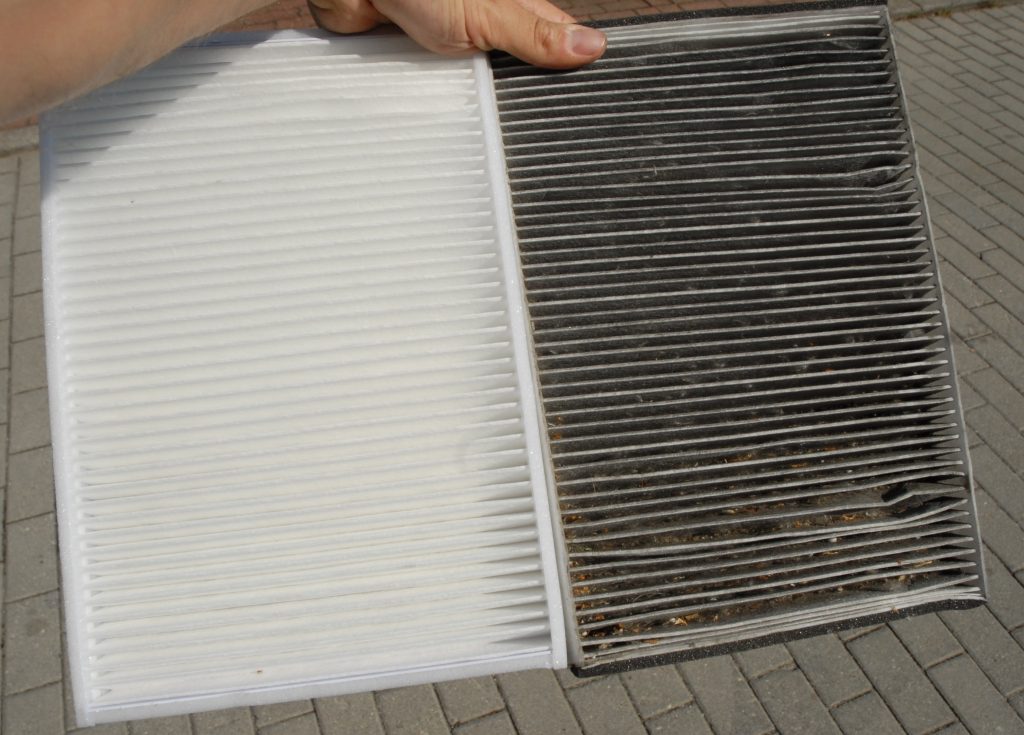
The cabin filter may be more difficult to replace than the engine air filter because it’s usually in a more awkward location, for example, under the glove box. Still, replacing it is definitely within reach for someone with just basic DIY skills.
Automatic Transmission Fluid (ATF)
Typically, it should be changed not later than every 70,000 miles when using synthetic oil. Using the correct oil in your transmission is very important – it has to have the correct friction coefficient and viscosity to work well with the transmission clutch plates.
Now, let me clear something up. When it comes to automatic transmissions, there is no such thing as “filled for life”. ATF is not magical and does degrade just like any lubricant.
Over time, the friction modifiers break down, changing the transmission shifting characteristic. Also, the fluid oxidizes from the heat generated in the torque converter. Oxidized fluid won’t have the lubricating properties it used to, and there will be a change in its viscosity.
Then there is the abrasive debris generated by the clutch packs that will stay in the transmission unless removed with the fluid and the filter. Therefore, never changing the transmission fluid will accelerate the wear on the transmission.
Consider these two options:
-
The transmission oil is changed every 70,000 miles and the transmission is still running strong at 200,000 miles.
-
The transmission oil is never changed and the transmission fails at 120,000 miles. The original fluid lasted the “life” of the transmission, didn’t it? It’s a self-fulfilling prophecy.
The manufacturers don’t care if transmissions fail at 100k or 200k miles. At this point, the car is out of warranty and the first owner most likely sold the car already. In fact, it’s better if transmissions fail – there is money to be made servicing them and it creates an incentive to buy new vehicles.
As I see it, “sealed for life” means “as long as the warranty lasts”.
There is no doubt that modern, synthetic ATF has much better chemical stability and resistance to oxidation when compared to mineral-based ATF, which allows us to increase the time between oil changes.
The 70,000 miles interval I mentioned above is assuming you are already using synthetic ATF. If your vehicle is filled with mineral ATF, a reasonable interval would be about 40,000 miles. As always, don’t exceed the ATF replacement interval (if there is one) in your car owner’s manual. The intervals I mention here are just some reasonable examples.

A simple and safe method of changing the transmission fluid in used cars is to:
-
Drain as much old fluid as possible. Usually, about 50% or maybe 60% will come out, the rest will remain in the torque converter.
-
Fill up the transmission with fresh fluid and go for a drive. Let the transmission warm up and shift through the gears, then come back and drain it again.
-
Refill with fresh fluid again. If possible, change the transmission filter as well.
This way you can replace 80% of the old fluid without forcing the new fluid in under pressure as you would with a transmission flush. Remember to buy enough fluid for two drain/fill cycles.
I don’t recommend flushing the transmission in older cars as it’s an aggressive procedure which may cause issues in poorly serviced and worn-out transmissions.
Manual transmission fluid
It’s likely that your car owner’s manual does not specify a change interval for manual transmission fluid. As opposed to an automatic transmission, I could agree that a well designed manual gearbox can indeed live a very long life on the factory fill.
This is because there isn’t nearly as much heat generated in a manual gearbox – there is no torque converter and a lot less slipping occurs when changing gears. There are no valves which can get clogged with sludge or wear out from poor lubrication. Also, a lot less debris is generated because there are no clutch packs as the clutch is outside of the gearbox.
Still, the good practice is to replace the transmission fluid in manual gearboxes. Replacing it every 100k miles should be adequate as long as good quality synthetic oil is used. Flushing isn’t necessary.
In some cases, the oil change interval should be reduced, for example, when the car is used for towing or in heavy vehicles in general. Also, some gearboxes are simply weak and require dramatically more frequent gear oil changes to prevent premature wear.
Power steering fluid change
The power steering fluid is another item that may not have a replacement interval specified in the car owner’s manual. Just like with the manual gearbox oil, replacing the power steering fluid every 100k miles should be enough, in my opinion.
If it’s not specified in the manual, it’s up to you whether you want to replace it or not. The power steering fluid does degrade over time, and by 100k miles it will most likely be full of metal particles.
Engine coolant replacement
The coolant replacement interval depends on the type of antifreeze used. Here are the three major kinds of antifreeze used in cars:
-
Inorganic Acid Technology (IAT coolant) – this is the classic green stuff that needs to be replaced every 2 or 3 years.
-
Organic Acid Technology (OAT coolant) – this is a type of long-life coolant that typically lasts 5 years.
-
Hybrid Organic Acid Technology (HOAT coolant) – this is the latest and most long-lived coolant type. The HOAT coolant replacement interval may exceed 5 years and typically it is up to 7 years.
As with most car fluids, using the correct type of coolant is important as IAT and OAT fluids don’t mix. Topping up with a random antifreeze is a bad idea – better add some distilled water until you can replace the entire fluid.
Over time, the coolant loses its rust-inhibiting properties and it may start corroding the cooling system internally. While the coolant will maintain it’s properties for quite long (i.e. it will not freeze), the corrosion inhibitors will be long gone before then. That’s why it’s important not to exceed the replacement intervals specified by the manufacturers.
Some manufacturers specify a “long-life” service interval for the engine coolant. For example, Mercedes-Benz specified a 15 years interval for some of their cars. They achieved this by adding a silica gel packet to the coolant reservoir. The chemistry of the coolant would not last that long on its own.
As I see it, the long-life intervals are fine as long as it’s not something ridiculous like 10+ years, unless there is some clever engineering involved. In most cases, a typical, non-OEM, long-life coolant is usually good for 5 or 7 years.
Coolant flushes are usually not necessary if the car has been maintained properly. Also, in older vehicles, flushing can expose weak points and make leaks show up.
Fuel filter replacement
Petrol engines – The petrol filter is usually located under the car near the fuel tank, or in the fuel tank itself in case of “lifetime” filters. The replacement intervals vary, it may be 50k miles, 100k miles or never when it’s a “lifetime” filter.
I think that ‘never’ is a bit optimistic for any kind of filter. Therefore, I recommend replacing the “lifetime” filters at 100,000 miles. Otherwise, please follow the instructions in your car owner’s manual.
Diesel engines – The diesel filter is usually located under the bonnet for easy access. That’s because it needs to be replaced a lot more often than a petrol filter. The diesel filter is typically replaced every 20,000 – 30,000 miles.
Just like with the air filter, a good rule of thumb is to replace it with every second or third oil change.
Modern diesel injection systems run at stupidly high pressures (1500 bar+) and the fuel must be very clean no to damage the pump or the injectors. As the filter ages, it gets clogged. This puts more strain on the fuel pump, which needs to work harder to pump the fuel. Therefore, it’s important to replace these filters on time.
Spark plug replacement
A spark plug is what ignites the air-fuel mixture in a petrol engine. There is usually one spark plug per cylinder, sometimes two. The type of material used for the spark plug electrodes determines the lifespan of the spark plug. The electrodes are the areas where the electrical arc is generated.
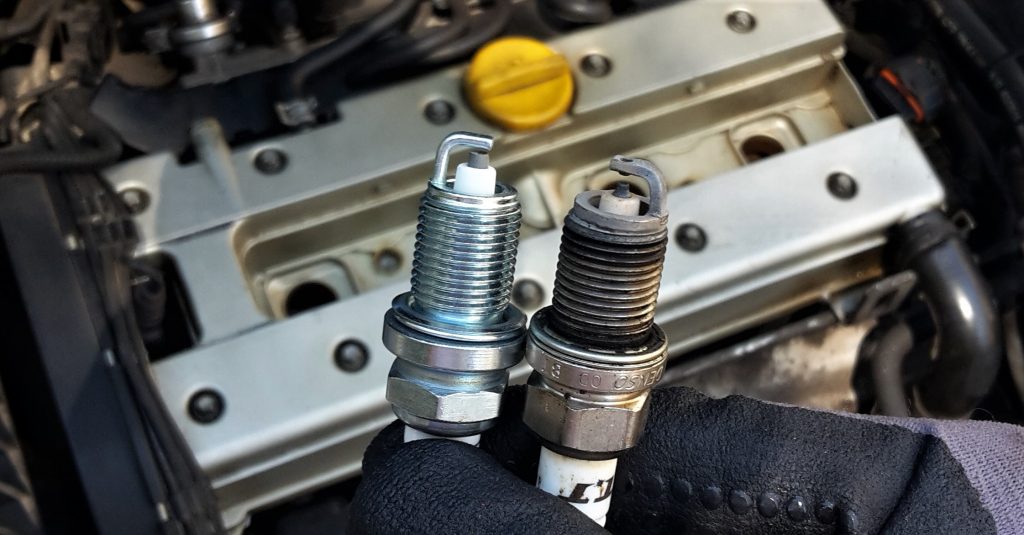
The typical spark plug replacement intervals are as follows:
-
30k miles for copper spark plugs. These are the cheapest kind. They are still often used in turbocharged engines.
-
70k miles for platinum spark plugs. These are typical long-life spark plugs found in modern cars.
-
100k miles for iridium spark plugs. These are the most corrosion resistant, longest lasting spark plugs. Iridium may be linked to the asteroid that killed the dinosaurs, but it’s great for spark plugs!
Oh, one more thing. Copper spark plugs don’t actually have copper electrodes. In reality, they have copper cores (like most spark plugs) and nickel electrodes. The correct name should be nickel spark plugs, but that’s not what people call them.
Worn-out spark plugs reduce mileage and power. Badly worn-out plugs can cause engine misfires. If you continue driving a car that misfires, you may damage (melt) the catalytic converter because of the unburnt fuel entering the exhaust.
Brake pads and discs
Brake pads and discs should be replaced as needed. Their wear is highly dependent on the driver.
If you have a mid-sized car and drive “normally”, the average lifespan of front brake pads should be around 50,000 miles while the rear pads may last 75,000 miles. On the other hand, if you drive like a maniac, you might need new pads even after 20,000 miles. Most of the braking force is applied to the front wheels so front brakes wear out faster.
It is recommended to replace the brake discs at the same time as the brake pads, but it isn’t always necessary. Brake discs become thinner as they wear, and manufacturers specify a minimum brake disc thickness.
You might be able to replace just the pads if the discs still have an adequate thickness and their surface is still good. Before deciding to replace the brake pads alone, consult a specialist to evaluate the condition of your brake discs.
Replacing tyres
Just like with the brake pads, tyre wear is highly dependent on the driver. The tyres should be replaced when they are worn out or when they get too old.
A minimum tyre tread depth is specified in most countries. In the UK, it’s 1.6mm for passenger cars. This should be measured across the central three-quarters of the tyre tread. The 1.6mm is a legal requirement, which is far from optimal. In my opinion, the tyres should be replaced earlier.
The usual recommendation is to replace the tyres when the tread wears below:
-
3mm for summer tyres
-
4mm for winter tyres (1.6mm is useless in snow)
For summer tyres, the braking distance on wet roads starts to increase dramatically below 3mm. You may expect a 30% increase in braking distance going from 3mm to 1.6mm tyre tread. For reference, new tyres usually start with around 8mm of tread.
As for the age of the tyre, 10 years is the maximum, in my opinion. That’s because the rubber degrades over time and becomes more susceptible to cracking. It’s also good to know that tyres in storage don’t degrade nearly as fast as when driving. Buying a brand new tyre that has been in storage for 3 years is not a big deal as long as it’s been stored properly. Tyres Are Not Bananas.
Lastly, other reasons to replace tyres include heavy uneven wear, sidewall bulges or large cracks.
The manufacturing date is stamped on the tyres so it’s easy to check their age. Here’s how:
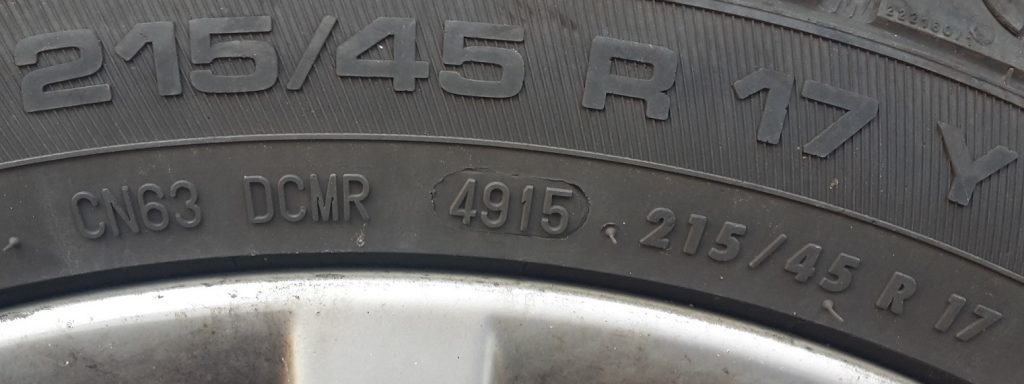
The first two digits denote the week of production and the second two digits represent the year. Therefore, the tyre in the photo above was produced in the 49th week (November) of 2015.
If you found this article useful, please share it with your friends!
And get that 3-year-old cabin filter changed already…

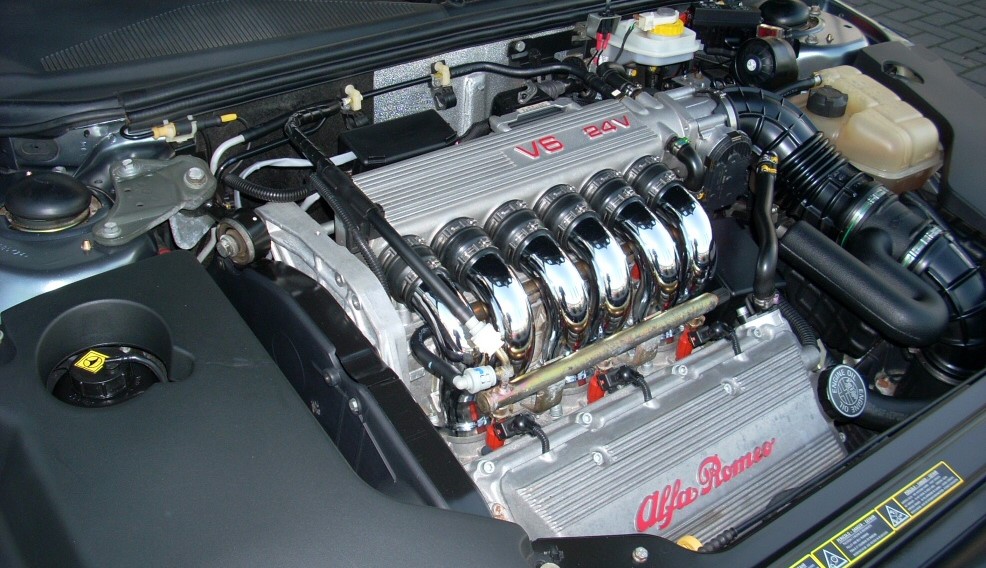
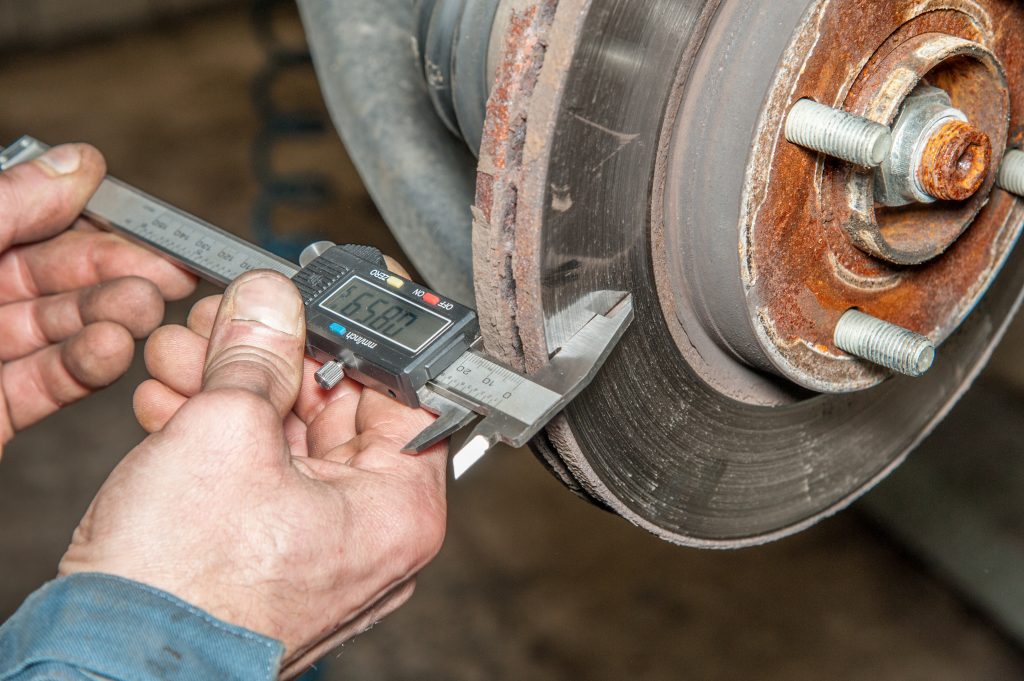
What an excellent website this is ! – very informative and full of sensible and valuable advice. Well done!